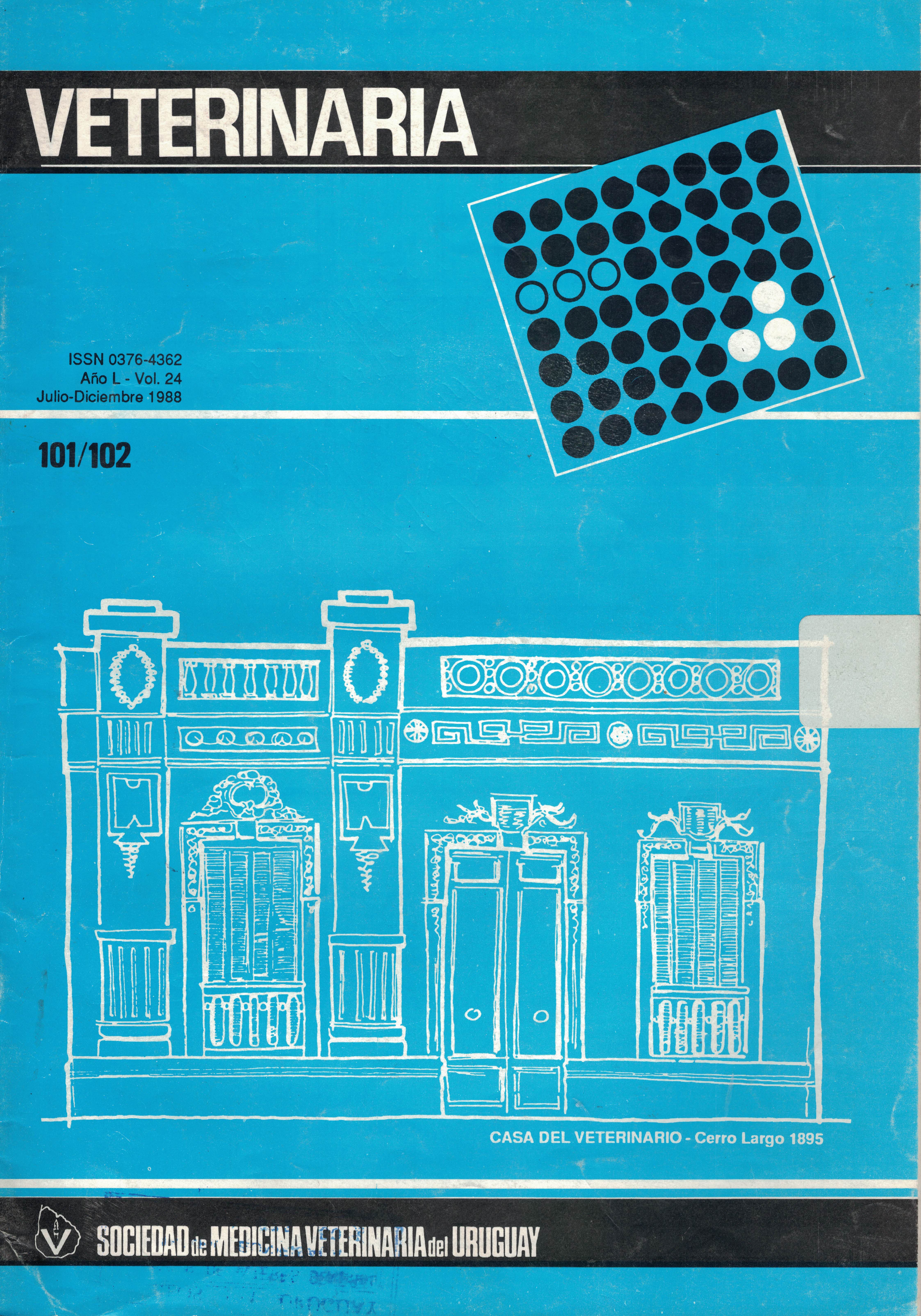Prevalence of porcine parvovirus in breeding establishments
Keywords:
Porcine parvovirus, Pigs, SerologyAbstract
In order to establish the prevalence of Porcine Parvovirus Infection (PVP), a serologic survey covering seven breeding farms was carried out. Eighty five samples were collected from a total of 340 pregnant sows, representing a 25% of the suine population. Sera were processed by the Hemmaglutination Inhibition test. Those with titers above 1:80 were considered positive. All the farms had positive animals in a range between 11 and 100%, with a global prevalence of 58.8%. Class discrimination showed the following percentages: 42.3% not mated sows; 57.1% first breed and 71.1% multiples breeds. A clear tendency of serpositive increase with age was observed, being the difference between not mated sows and multiple breeds of statistic importance (p < 0.05). Results indicate that in spite of the size of the sample, PVP is largely distributed in the suine population of the country. It is important to bear in mind PVP's action when facing infertility problems or perinatal mortality.









